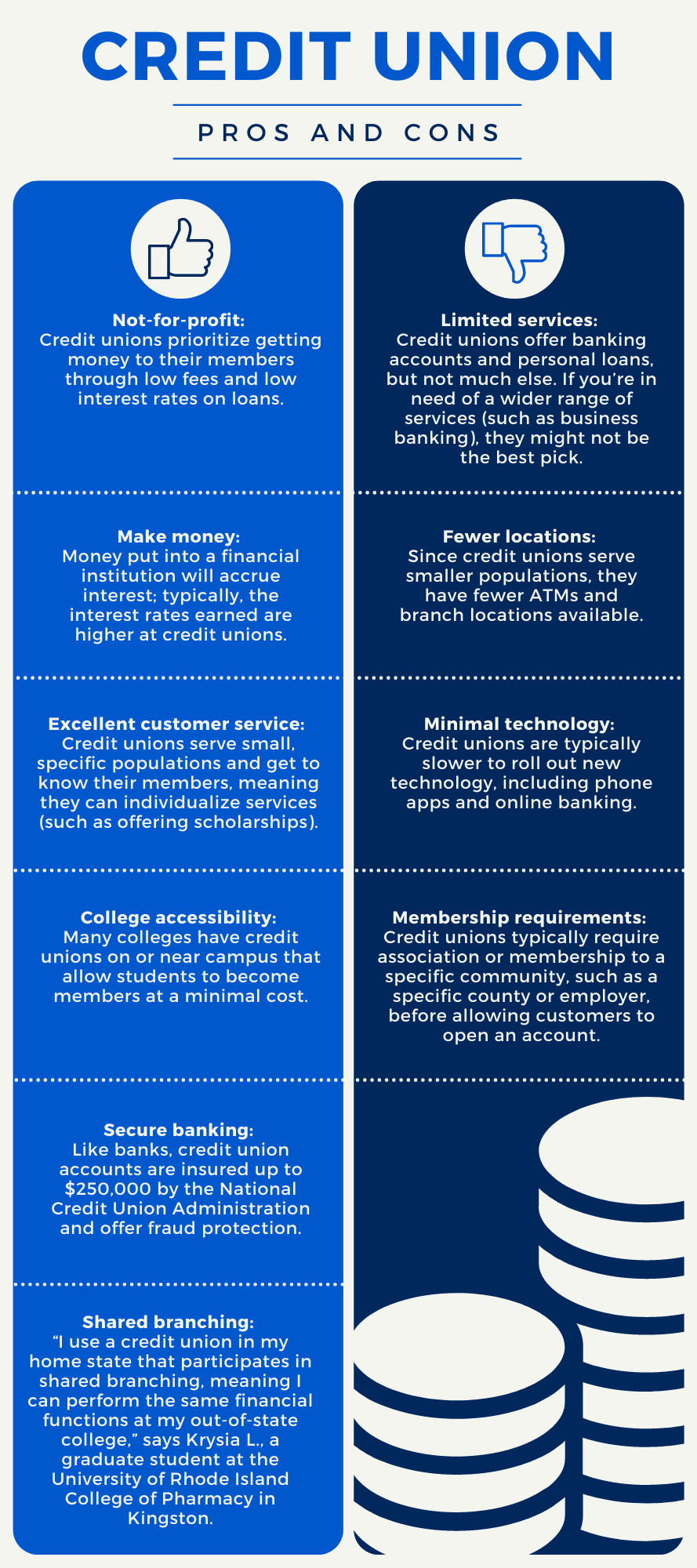The Ultimate Overview to Recognizing Cooperative Credit Union

Lending institution stand as unique monetary entities, rooted in principles of shared support and member-driven operations. However, beyond their fundamental values, recognizing the complex workings of cooperative credit union includes a much deeper exploration. Untangling the complexities of membership eligibility, the advancement of services supplied, and the distinct benefits they bring calls for a comprehensive assessment. As we browse via the ins and outs of credit rating unions, an insightful journey waits for to clarify these member-focused establishments and how they differ from conventional financial institutions.
What Are Lending Institution?
Lending institution are member-owned banks that supply a series of financial services to their participants. Unlike standard financial institutions, lending institution operate as not-for-profit organizations, suggesting their main focus gets on offering their members as opposed to maximizing earnings. Participants of a cooperative credit union generally share a common bond, such as benefiting the exact same company, coming from the same area, or belonging to the same company.
Among the essential advantages of credit rating unions is that they commonly offer higher rate of interest on financial savings accounts and lower rates of interest on lendings contrasted to financial institutions. Hybrid Line of Credit. This is since credit unions are structured to benefit their members directly, enabling them to hand down their revenues in the type of far better prices and less fees. Additionally, cooperative credit union are recognized for their personalized customer support, as they focus on developing partnerships with their participants to recognize their unique financial needs and goals
History and Advancement of Lending Institution
The roots of member-owned financial cooperatives, known today as cooperative credit union, trace back to a time when neighborhoods sought alternatives to conventional banking establishments. The principle of cooperative credit union come from in the 19th century in Europe, with Friedrich Wilhelm Raiffeisen typically credited as the leader of the cooperative financial motion. Raiffeisen founded the first recognized cooperative credit union in Germany in the mid-1800s, emphasizing community support and self-help principles.
The evolution of cooperative credit union proceeded in North America, where Alphonse Desjardins developed the very first credit rating union in Canada in 1900. Quickly after, in 1909, the first united state lending institution was created in New Hampshire by a group of Franco-American immigrants. These very early lending institution operated the fundamental concepts of common support, autonomous control, and participant ownership.
Gradually, credit rating unions have actually expanded in appeal worldwide due to their not-for-profit framework, emphasis on serving members, and supplying competitive monetary services and products. Today, lending institution play an important function in the economic industry, offering community-oriented and accessible banking choices for businesses and individuals alike.

Subscription and Eligibility Requirements
Subscription at a credit score union is commonly limited to people satisfying certain eligibility criteria based on click now the institution's beginning concepts and regulatory needs. Some credit scores unions may just serve individuals that work or live in a certain location, while others may be customized to staff members of a specific company or members of a certain organization.
Additionally, credit scores unions are structured as not-for-profit companies, suggesting that their main goal is to serve their participants instead of produce profits for investors. This emphasis on member service usually equates into even more personalized focus, lower fees, and competitive rates of interest on financings and cost savings accounts. By satisfying the qualification standards and becoming a participant of a cooperative credit union, individuals can access a series of financial services and products customized to their particular requirements.
Providers and Products Offered
One of the vital aspects that sets cooperative credit union apart is the varied range of financial product and services they supply to their members. Credit report unions generally supply typical financial solutions such as savings and checking accounts, financings, and credit scores cards. Participants can additionally gain from financial investment services, including pension and read financial planning assistance. Many lending institution supply affordable rate of interest on financial savings accounts and fundings, in addition to lower charges compared to traditional banks.
Moreover, credit history unions typically offer convenient online and mobile banking options for members to easily handle their financial resources. They may use rewards such as shared branching, enabling members to access their accounts at other cooperative credit union across the country. Some credit report unions likewise supply insurance items like life, car, and home insurance to assist participants protect their possessions and enjoyed ones.

Benefits of Financial With Lending Institution
When thinking about banks, exploring the advantages of financial with lending institution discloses distinct advantages for participants seeking tailored service and competitive prices. One significant benefit of credit rating unions is their concentrate on personalized customer service. Unlike big financial institutions, lending institution are member-owned and prioritize building strong connections with their members. This suggests that credit history union team often have a deeper understanding of their members' financial requirements and can use customized remedies to aid them achieve their goals. Additionally, lending institution are recognized for offering competitive rates of interest on financings and savings accounts. Since they are not-for-profit companies, cooperative credit union can typically supply reduced financing prices, greater cost savings prices, and reduced charges compared to conventional banks. This can result in significant cost savings for members over time. On the whole, financial with a lending institution can offer a much more personalized, cost-effective, and member-centric financial experience.
Verdict
In conclusion, credit score unions stand out as member-owned financial institutions that prioritize offering their participants over making the most of profits. With origins dating back to 19th century Europe, credit history click to find out more unions comply with concepts of common assistance and member ownership.
Credit history unions are member-owned monetary organizations that use a variety of banking services to their members. The idea of credit report unions stem in the 19th century in Europe, with Friedrich Wilhelm Raiffeisen usually attributed as the leader of the participating banking motion.The advancement of credit rating unions continued in North America, where Alphonse Desjardins established the first credit rating union in Canada in 1900. Credit history unions normally give typical financial services such as savings and inspecting accounts, loans, and credit rating cards.When considering economic organizations, exploring the benefits of banking with debt unions reveals special advantages for members seeking tailored solution and competitive rates.